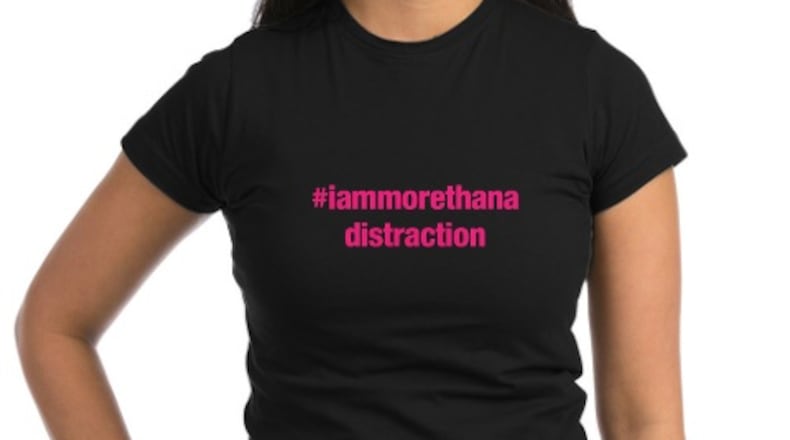I officially joined the old crank club last week when I went out early and ran into dozens of teenagers scurrying to the first day of school. My initial reaction to the scene was: “I can’t believe these outfits.”
The students I passed seemed to choose between two themes in their first-day attire: Malibu Barbie or “Rocky Horror Picture Show.” There were platform heels, torn T-shirts and exposed midriffs. There was heavy use of black eyeliner by both sexes, along with neon hair tones.
My surprise was tempered by a happy realization: This eclectic parade of personal choices and preferences reflects modernized school dress codes that allow individual latitude and eliminate long-standing practices of policing children’s bodies.
And that’s a good thing.
Because it doesn’t matter if I wouldn’t want to go to algebra class in uncomfortable shoes and a peplum top. I’m certain teens would be equally unsettled in my Aerosoles sandals with cushion support. (Let’s not even mention my knee-length shorts.)
Among the school districts revising dress codes is DeKalb, which started classes last week. The new rules grew out of efforts by Lakeside High School students to highlight the irrational and unfair aspects of the dress code.
A band of students delved into data to document the race and gender of students cited for dress code violations. They found girls and people of color are far more likely to be dress-coded, and they presented their findings in February to a receptive superintendent and school board.
The outcome of their information campaign is a far less regimented dress code in DeKalb County schools. No longer are there gender-specific language and rules that burden students from specific cultures or religions. In a message to parents, the district said, “These changes better align with the evolving societal norms while ensuring the well-being of both students and staff members.”
Historically, dress codes sought to ensure female students did not sidetrack male classmates, banning clothing described in many district policies as “unduly revealing and distracting.”
The female body shaming underpinning dress codes came out of the shadows a few years ago when a South Carolina female principal warned high school girls at an assembly that only the thinnest of them ought to wear leggings to school, saying: “I’m going to tell you this now, unless you are a size 0 or 2 and you wear something like that, even though you’re not fat, you look fat.”
A 60-page report from the U.S. Government Accountability Office released last year concluded that dress codes “may make the school environment less equitable and safe for students” and estimated that 60% “have rules involving measuring students’ bodies and clothing, which may involve adults touching students.” The end result, according to the report, is that girls can feel unsafe in school.
Schools still march girls who bared too much shoulder or collarbone to in-school suspension or pull them out of class until parents arrive with a change of clothing. Some schools take punishment further, forcing girls to wear oversized T-shirts that proclaim, “Dress code violator.” These extreme responses by schools show the irrationality of dress codes: A voluminous yellow “Dress code violator” T-shirt is far more distracting than a glimpse of a bra strap or distressed jeans.
“So far, I have seen a lot of relief over not only the changes that have been made, but also the fact that they are being generally enforced correctly within Lakeside,” said Lakeside High School junior Anna Katz, who founded the student group that analyzed DeKalb dress code data and took their findings to the school board.
While Lakeside staff and teachers are versed in the new dress code, Katz said not all DeKalb schools are aware yet of the changes. “Our group has been hearing about some issues at other schools with incorrect enforcement of the new dress code, so we have been in contact with county leaders to ensure that the changes are properly explained to staff around the county,” she said.
Credit: Jason Getz / Jason.Getz@ajc.com
Credit: Jason Getz / Jason.Getz@ajc.com
The code changes free DeKalb parents and students from frustrating shopping searches for shorts that met the required length and shirts suitable for both 94-degree temperatures and American lit class. Elsewhere, mothers who struggled as students 25 years ago to pass the fingertip test — shorts or skirts can’t fall above the fingertips — confront the same dilemma shopping with their daughters this year.
Now in DeKalb, students and teachers can concentrate on reading and math instead of hemlines and strap widths.
“Many girls have approached me and other group members showing their gratitude for the changes. We no longer have to worry about being called out by administrators and trying to stay cool in the heat,” said Katz. “All of this contributes to a more positive environment where we can focus on what truly matters: learning.”
About the Author
The Latest
Featured



